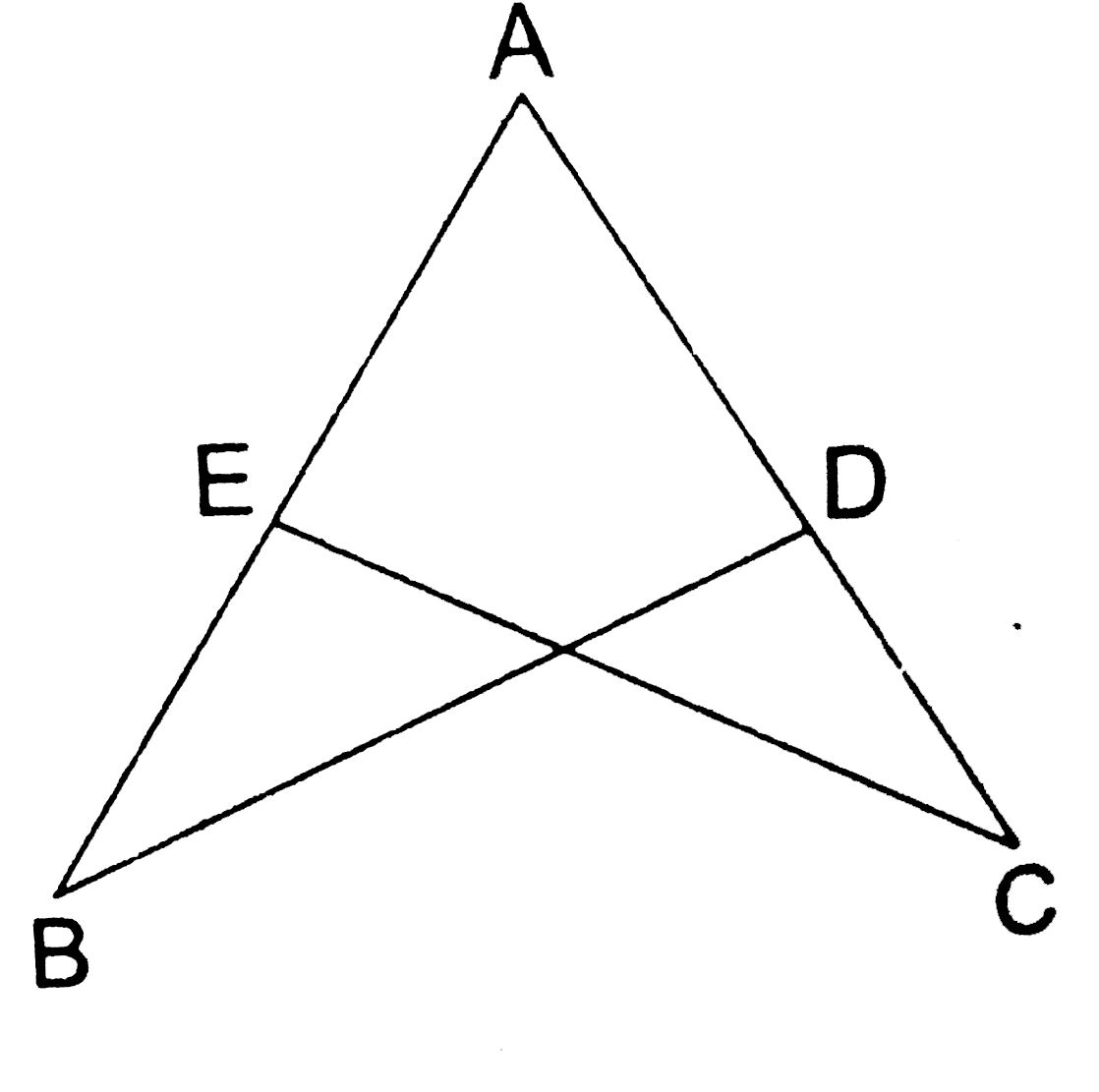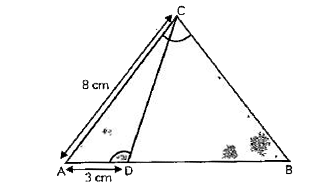In the given figure, if AD = 5 cm and CE = 3 , then A(ΔABD)A(ΔBED)= __________.

A
53
B
259
C
35
D
58
Video Solution
Text Solution
The correct Answer is:A
|
Answer
Step by step video & image solution for In the given figure, if AD = 5 cm and CE = 3 , then (A(DeltaABD))/(A(DeltaBED))= __________. by Maths experts to help you in doubts & scoring excellent marks in Class 10 exams.
Updated on:21/07/2023Topper's Solved these Questions
- SIMILARITY BOOK - TARGET PUBLICATIONCHAPTER - SIMILARITY EXERCISE - Additonal Problems for Practice( Basid on Practice Set 1.1)
11 Videos
- SIMILARITY BOOK - TARGET PUBLICATIONCHAPTER - SIMILARITY EXERCISE - Additonal Problems for Practice(Based on Practice Set 1.2)
11 Videos
- SIMILARITY BOOK - TARGET PUBLICATIONCHAPTER - SIMILARITY EXERCISE - Activites for Practice
4 Videos
- QUESTION FROM STD. IXBOOK - TARGET PUBLICATIONCHAPTER - QUESTION FROM STD. IXEXERCISE - Statistics
14 Videos
- STATISTICSBOOK - TARGET PUBLICATIONCHAPTER - STATISTICSEXERCISE - Problem Set-6
21 Videos
Similar Questions
Knowledge Check
In the given figure, AP = 3 cm, BA = 5 cm and CP = 2 cm. Find CD :
 A12 cmB10 cmC9 cmD6 cm
A12 cmB10 cmC9 cmD6 cm
In the given figure, AB = AC and AD = AE. Prove that:
ΔABD≅ΔACE

View SolutionIn the given figure, AB = CD and AD = CB. Prove that ΔABD≅ΔCDB.

View SolutionIn the given figure, AB = AC and ∠B=∠C.
Then ΔABD≅ΔACE by

View SolutionIn the given figure, AB = AC and AD = AE. Prove that:
BD = CE

View SolutionIn the given figure, ∠ACB=∠CDA,AC=8cm,AD=3cm, then BD is :

View SolutionIn the given figure, DE∣∣BC. If DE=5cm,BC=8cmandAD=3.5cm then AB=?

View SolutionIn the given figure, DE || BC. If AB = 12 cm and AD = 3cm, then AE : EC =

View Solution


